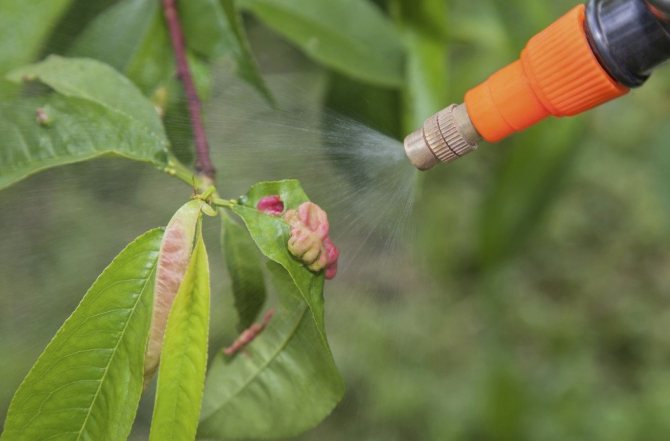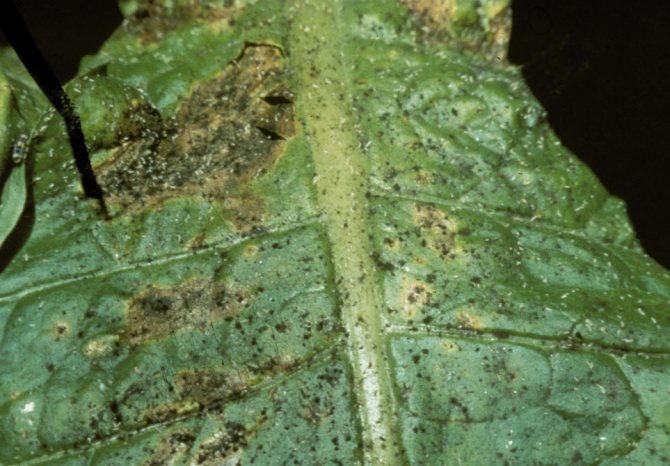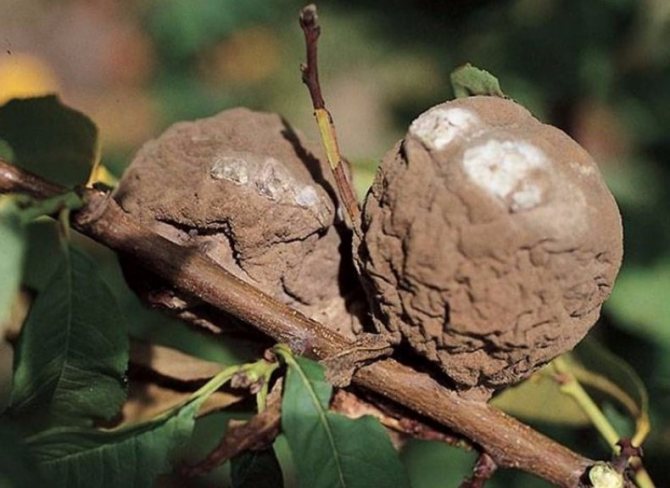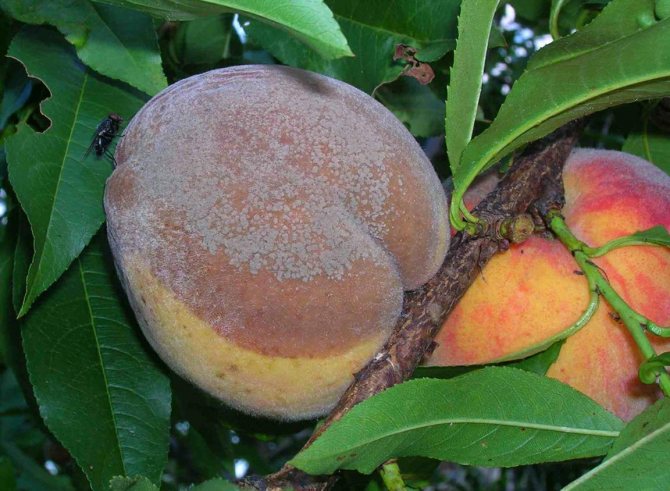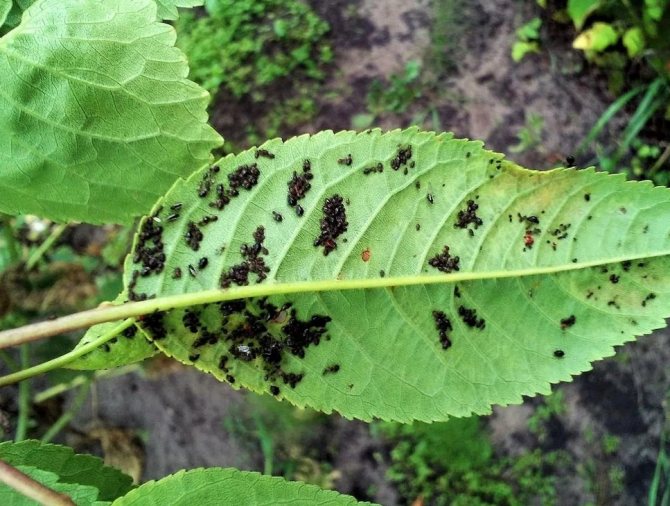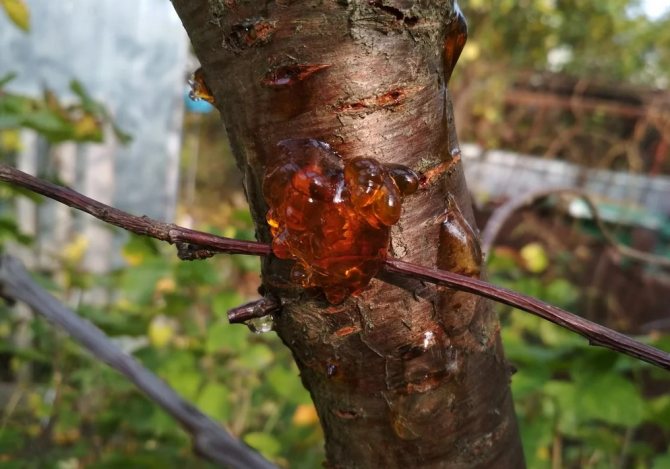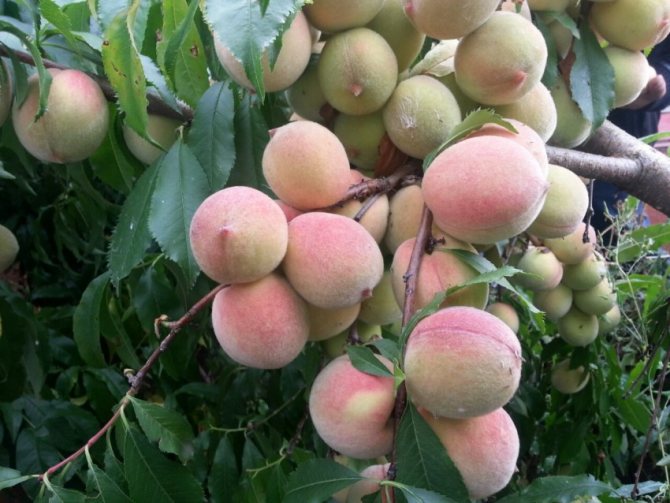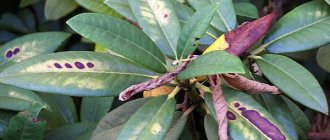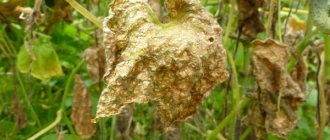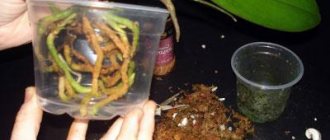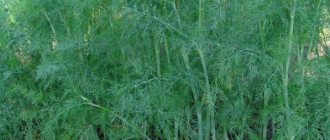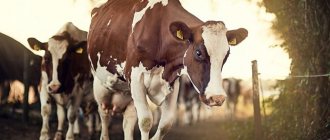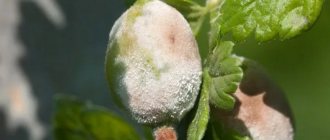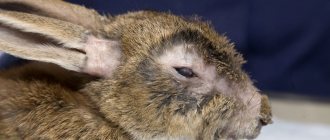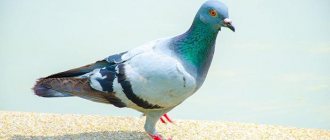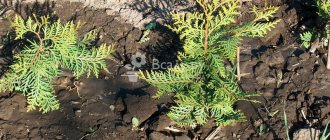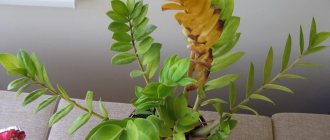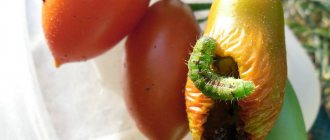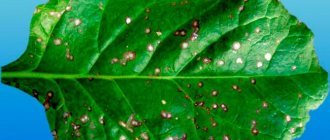Peach diseases and their treatment
Peach is mainly susceptible to fungal diseases. For their treatment and prevention, drugs are used, which are called fungicides. Consider the most common peach diseases.
Curly leaves
The most dangerous and common peach disease. Its causative agent is the marsupial fungus Taphrina deformans, the spores of which in spring enter the buds, into the cracks of the shoots. As a result, gum begins to ooze from them, and swellings in the form of light green bubbles form on young leaves. Then their color changes to amber-red and then to brown, after which a wax coating appears on the bubbles, where fungal spores accumulate.
Ascomycetes (from the Greek ἀσκός 'bag'), or cloudy mushrooms (Latin Ascomycota) [1] [2] - a department in the kingdom of fungi that unites organisms with septic (divided into parts) mycelium and specific organs of sexual sporulation - bags (asci ), most often containing 8 ascospores.
Wikipedia
Affected leaves turn black, dry up, become brittle and crumble. One- and two-year-old branches are mainly susceptible to disease. They acquire a yellow color, thicken, bend and, as a result, dry out. The buds die off without forming fruit. If you do not take urgent measures, then by May the tree will become bare, weakened greatly and in winter, most likely, it will die.
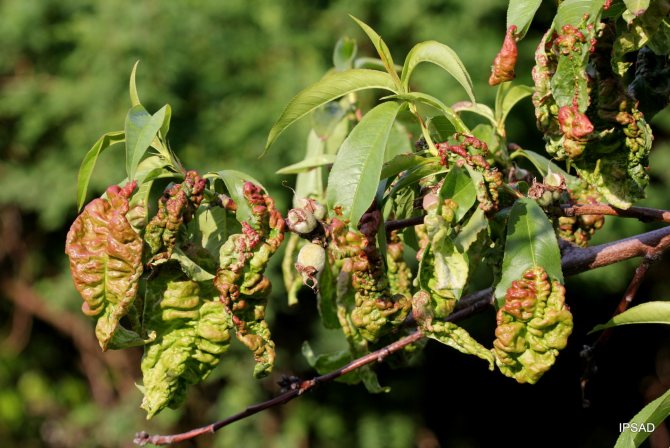
Curliness affects young peach leaves mainly on one- and two-year shoots
If signs of curly leaves are found in the spring, you should act immediately. First of all, the affected shoots are cut out and burned. Then you need to treat the plant with a 1% solution of Bordeaux liquid. The drug Abiga-Peak, which is a 40% solution of copper oxychloride, helps to cope well with the disease. For spraying, dissolve 40-50 g of the drug in 10 liters of water. The treatment is repeated four times with an interval of two weeks.
In order to prevent the disease in the fall, you should collect and burn the fallen leaves, as well as cut out dry, diseased and damaged branches (sanitary pruning). After that, the tree is treated with a 3% solution of copper sulfate. The same treatment is carried out one more time in early spring before the buds awaken. Before flowering, the plant should be treated with fungicides such as Horus, Strobi, Skor. After flowering, the treatment is repeated twice with an interval of 7-10 days. In the future, you can treat Fitosporin with an interval of 2-3 weeks during the entire growing season. This biofungicide is absolutely safe for humans and bees, and also has nutritional properties, having a humic bioactive fertilizer in its composition.
Video: Skor drug against curly peach leaves
Moniliosis
Peach, like most stone fruit crops, is susceptible to moniliosis. Infection with them usually occurs in the spring during flowering. The spores of the fungus are carried by bees on their paws while collecting nectar. Germinating, the fungus penetrates the shoots and leaves of the tree through the pistil. The affected parts of the plant wither, droop and look as if scorched by fire. Thanks to this phenomenon, the disease has a second name - monilial burn.
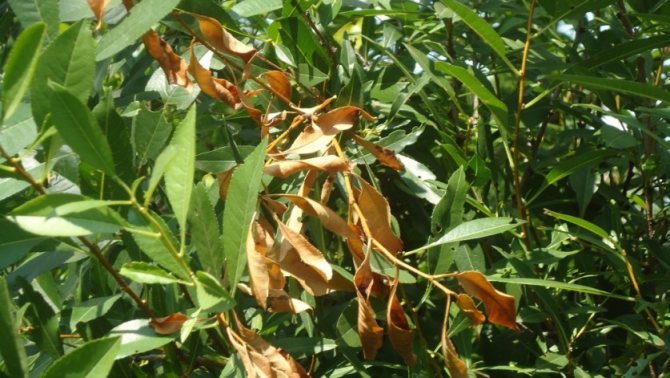

Plant parts affected by moniliosis wither, droop and look as if scorched by fire
Having found signs of moniliosis, it is necessary to cut out the affected shoots with a part of healthy wood and burn them. After that, the plant is treated with fungicides. In addition to those already known from the previous section, you can apply Kaptan, Kuproksat, Topsin-M, Tsineb.
In summer, moniliosis manifests itself in the form of fruit rot, which affects the peach fruit. Such fruits must be removed from the tree in a timely manner and destroyed so that they do not infect neighboring fruits. For processing at this time, you can use biological fungicides that are harmless to humans. These are drugs such as
- Gamair;
- Mikosan-V;
- Planriz;
- Phytoflavin;
- Fitosporin.
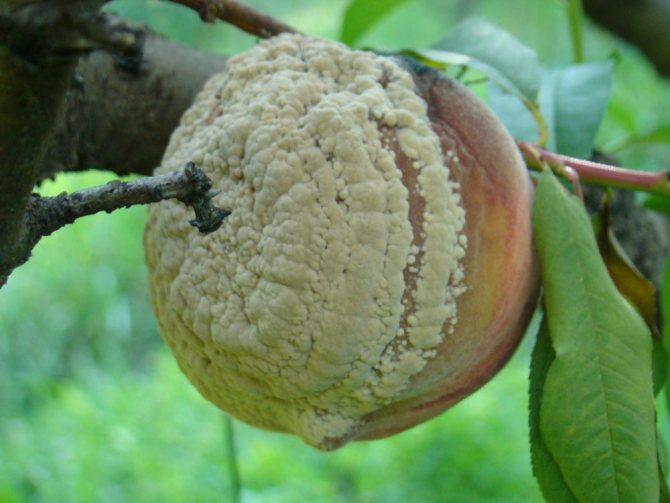

In summer, moniliosis manifests itself in the form of fruit rot, which affects peach fruits.
Clasterosporium disease
This fungal disease is widespread in stone fruit crops in all growing regions. The optimum average daily temperature for the development of the fungus is +20 ° C. Therefore, its greatest activity is observed twice a season - in spring and autumn. Primary infection usually occurs in early spring at a stable average daily air temperature of + 4-5 ° C. At this time, the mycelium, overwintering in fallen leaves and on the surface of the tree bark, begins to germinate and produce spores. When the optimum temperature and humidity is reached, the spores germinate in less than a day (19-20 hours), and after 5-6 days the first visible signs of the disease appear. They appear as small patches of reddish-brown or crimson color on the surface of the leaves. In a few days, the size of the spots increases to 4-5 mm, their inner surface dries up and crumbles, forming holes bordered by a red stripe.
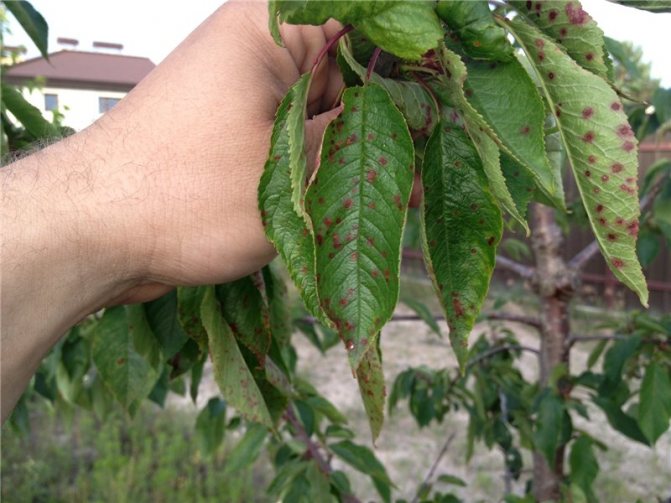

The first signs of clotterosporium disease appear as small spots of red-brown or crimson color on the surface of the leaves.
With a strong development, the disease can also affect shoots, on which small reddish spots with a black or brown border also appear. As the spots grow, they are pressed into the surface of the bark and crack over time. This often leads to gum flow in the affected areas. When fruits are damaged, ulcers of brown or red-brown color are formed on them, which, growing, take the form of warts. The warts harden, the upper part of them falls off and gum begins to exude abundantly from the formed pits.
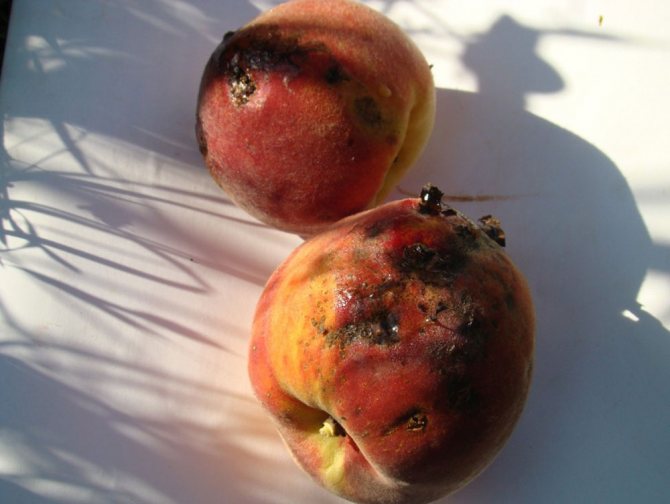

When the fruit is damaged by clasterosporium, ulcers of a red-brown or brown color are formed on them, which grow in the form of warts - the upper part of them disappears and gum begins to liberate abundantly from the formed pits
Treatment of the disease consists in fungicide treatments, an approximate list of which was given above. In addition, it is necessary to remove and destroy fallen leaves, affected parts of the plant.
Video: stone fruit clotterosporiasis
Powdery mildew
Powdery mildew is caused by one of the marsupials. Peach leaves, shoots and fruits are affected by the disease, and most often and strongly this occurs in young gardens and nurseries. In the first half of May, the first signs of the disease appear in the form of a white powdery coating on the affected parts of the plant. By mid-July, the development of the disease reaches its peak. Leaves folding in the shape of a boat crumble, green fruits are covered with a thick layer of plaque and no longer develop, and when damaged in a mature form, they shrink, crack, and rot. The fungus overwinters with mycelium on the affected shoots, and in the spring there is a primary infection of young leaves and shoots. As a result of the weakening of the disease, the winter hardiness of the peach decreases sharply, and the yield also decreases by 5-7%.
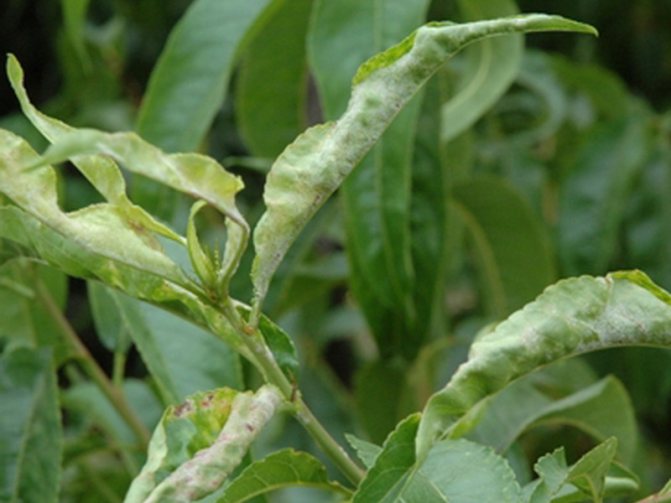

Leaves affected by powdery mildew fold in the shape of a boat, then crumble
The fight against powdery mildew is reduced to pruning and destruction of the affected parts of the plant, as well as processing with a 0.8% solution of colloidal sulfur. The first treatment is carried out on the "green cone", that is, when the buds swell, the second - two weeks after the end of flowering. After that, two more treatments are carried out with a 0.6% solution of colloidal sulfur with an interval of 1.5-2 weeks. And you can also use a 0.8% solution of serocin and other fungicides.
Cytosporosis
Fungi of the genus Cytospora are the causative agent of cytosporosis, a disease of the tree bark. It is most commonly affected by stone fruits, especially peaches and apricots. As a rule, this disease appears in neglected gardens with poor care or its complete absence. Healthy, well-groomed plants do not get sick with cytosporosis. Infection occurs during the dormant period in early spring or late autumn through damage or dead areas of the bark. And also this can occur due to damage to the cortex by clasterosporiosis. First, the mycelium develops in the bark, and then in the wood, which causes the death of living tissues. Gradually, the area of the lesion increases, under the dead bark sporulation of the fungus is formed in the form of black shiny tubercles with a diameter of 1.5-2 mm. The disease is usually accompanied by profuse gum flow.
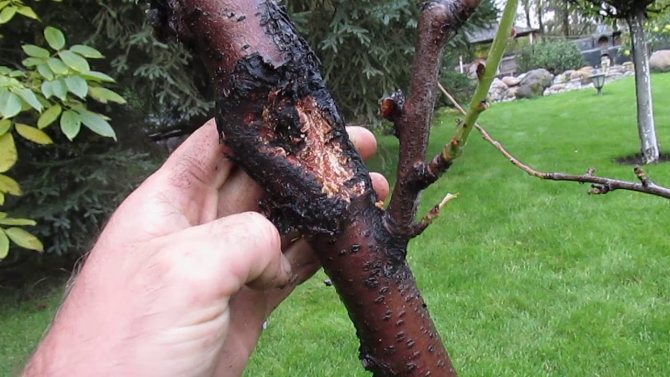

First, the mycelium develops in the bark, and then in the wood, which causes the death of living tissues
Treatment of cytosporosis is carried out by stripping wounds to live bark and wood, followed by treatment with a 3% solution of Bordeaux liquid and covering with garden varnish. In case of significant damage, it may be necessary to remove entire branches, and if a tree trunk has been severely damaged, then it can no longer be saved. For prevention purposes, the bark of the tree should be periodically cleaned from dead parts, possible wounds should be healed in a timely manner, and the trunks and skeletal branches should be whitewashed with lime.
Peach processing goals in the spring
Peach is a capricious tree that needs proper care and regular preventive measures. To grow a healthy plant, it is necessary to fertilize and irrigate the land, to fight diseases in a timely manner. Experienced gardeners know how important spring cultivation is.
Processing the peach tree in the spring is necessary to destroy pests and fungi that winter in the bark and fallen leaves. Correctly carried out spring processing will save the tree from diseases and help preserve the harvest.
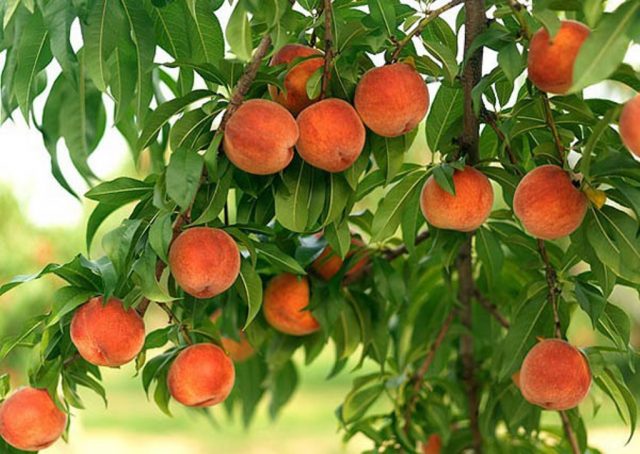

Peach pests and control
Like every fruit tree, the peach has its own pests, which sometimes cause significant damage to the crop. Consider the main representatives.
Aphids on a peach
Like many fruit plants, the peach is often affected by aphids. These are well-known small insects, which, depending on the species, have black, green, yellow, white, red or other colors. They settle on the underside of leaves, buds and tips of young shoots. And these insects get into the crown with the help of ants, which carry them on their backs. This fact is explained by the fact that ants like to eat sweet secretions of aphids, called honeydew. The damage from the pest is expressed in the drying out of some of the leaves and shoots, which leads to a weakening of the tree and a decrease in yield.
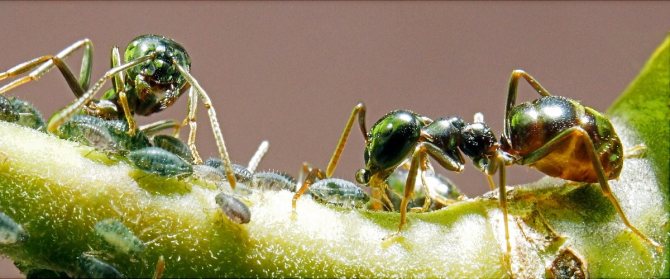

Ants love to feed on the sweet secretions of aphids.
The fight against aphids is carried out with the help of various insecticides (the so-called drugs for fighting harmful insects), as well as with the help of numerous folk remedies.
Of the popular insecticides, the following can be distinguished:
- Decis;
- Confidor;
- Dursban;
- BI-58;
- copper sulfate (early spring), etc.
Some folk remedies:
- Dandelion infusion: 400 g of leaves or 200 g of plants are taken for 10 liters of warm water and infused for 2 hours.
- Infusion of garlic: take 300 g of chopped garlic in a bucket of water and leave for 20 minutes.
- Onion peel decoction: 150 g of peel is insisted in a bucket of water for five days, after which 50 g of soap is added.
- A decoction of tomato tops: 200 g of dry tops are boiled in two liters of water for 30 minutes, after which they are diluted in a bucket of water and 50 g of soap are added.
All infusions and decoctions should be used immediately after preparation, as they are not intended for long-term storage.
If the tree is young and has a small crown, then you can simply cut off the leaves with aphid colonies and destroy them. You can also wash off the aphids with a high pressure water jet from a hose. And you also need to fight ants, which are massive suppliers of aphids. To do this, you need to whitewash the trunks and branches of trees with a lime solution, as well as install trapping belts on the trunks to prevent insects from crawling. Such belts can be easily made from available materials.
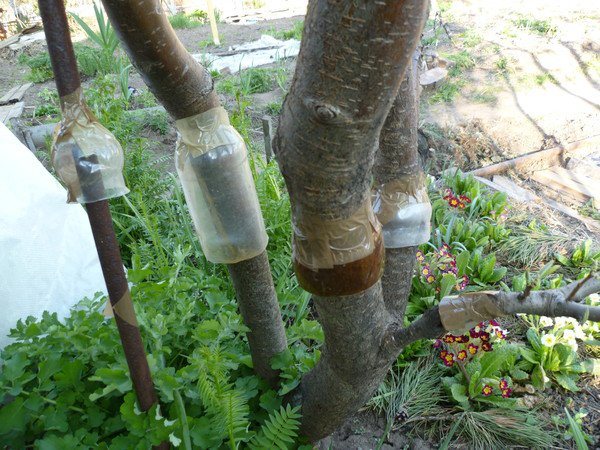

A hunting belt can be easily crafted from scrap materials
Weevils
Weevil beetles, which are also called flower beetles, overwinter in the soil, fallen leaves, and cracks in the bark. In early spring, when the soil warms up to 10-12 ° C, beetles crawl to the surface and rise to the crown. There they begin to feed first on the buds and buds, gnawing them and laying eggs. In the future, the beetles also eat the leaves and young shoots of the peach. Larvae emerge from the eggs, eating flowers and ovaries from the inside, thus causing irreparable damage.
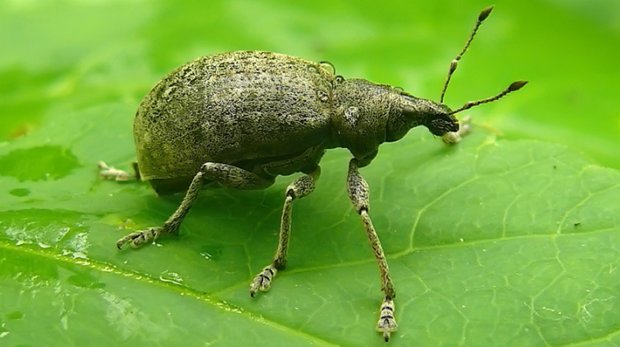

Weevil beetles feed on peach buds, buds, leaves and young shoots
In the early morning, when the temperature still does not exceed + 5-6 ° C, the beetles sit on branches in a daze. At this time, they can simply be shaken off onto a fabric or film previously spread under the tree. In order not to allow the beetles to climb the crown, it is good to install trapping belts on the peach boles, and also whitewash them with a solution of slaked lime. In late autumn, it is worth digging deeply around the trunk circles so that the pests raised upward die from frost.
Various insecticides are used to destroy flower beetles chemically. In late autumn and early spring, at rest, plants are treated with a 3% solution of copper sulfate or DNOC. Moreover, the latter is allowed to be used no more than once every three years. Before flowering and after flowering, treatments are carried out with Decis, Iskra, Fitoverm, etc.
Mites
Ticks are not insects, but are arthropods of the arachnid class. Therefore, ordinary insecticides are powerless against them, and acaricides are used for control and prevention (this is a group of anti-mite drugs). These animals are very small and range in size from 0.25-0.35 mm to 1-2 mm, so it is difficult to detect them with the naked eye. A kidney mite lesion can be detected by the changed shape of the flower bud - it takes a barrel-shaped appearance and increases in volume.


On the branch on the left there are healthy buds, and on the second - those affected by a kidney mite
The spider mite first forms small yellow dots on the leaves, then the leaves turn yellow and fall off. If you do not take action, then in the future a cobweb appears on the plant - there are tick-borne nests in it.
To combat the mite, before and after flowering, the peach is treated with a solution of colloidal sulfur. The dosage is the same as for powdery mildew treatment. During the growing season, the acaricides Akarin and Fitoverm are good - their waiting period is only 2 days.
Fruit striped moth
This peach pest is widespread in the south of the European part of Russia. The butterfly is brown-gray in color and small in size, and is nocturnal. During the growing season, plants give 3 generations.
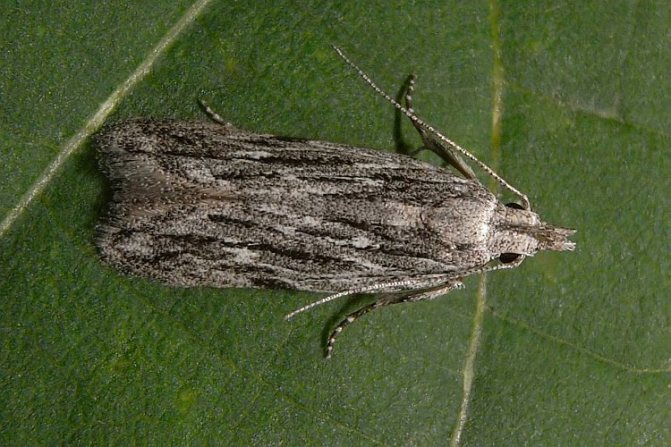

The fruit striped moth butterfly is brown-gray in color and small in size.
Brown caterpillars 8-10 mm long feed on young shoots, gnawing out their core from the upper tips to the base. During its short life, each insect destroys 4-5 shoots, which leads to a significant weakening of the tree. In summer, in addition to shoots, caterpillars also damage fruits, drastically reducing the yield.
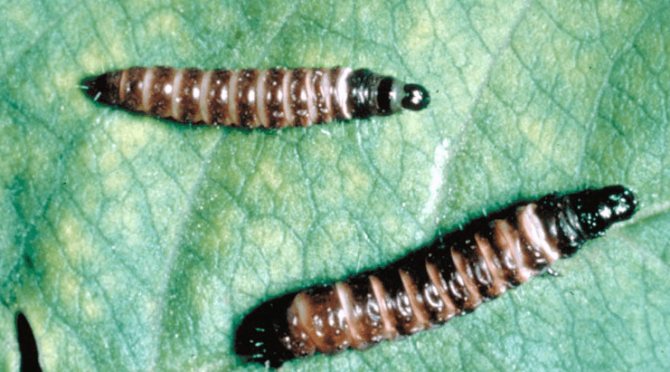

The caterpillars of the fruit moth are chocolate brown in color and have a black head.
For the purpose of control, various insecticides are used. In March, when the caterpillars begin to crawl out of shelters, you can use potent drugs - DNOC, Nitrafen. During the first flight of butterflies, Decis, Iskra, Karbofos are effective. In the future, only biological preparations that are safe for humans should be used. These are Fitoverm, Iskra-Bio, Entobacterin.
Eastern moth
This small butterfly (wingspan up to 15 mm) is called eastern, since it began its distribution from China, Japan and Korea. And thanks to a special addiction to peach fruits, it is also called the peach moth. Currently, it is distributed in almost all southern regions. As a crepuscular butterfly, it is most active in the morning and evening hours. The first emergence occurs at the time of flowering of the peach. After mating, the butterfly lays eggs on the inner surface of the leaves, and the females of the next generations (there can be up to six of them per season) lay eggs on the sepals and stalks.
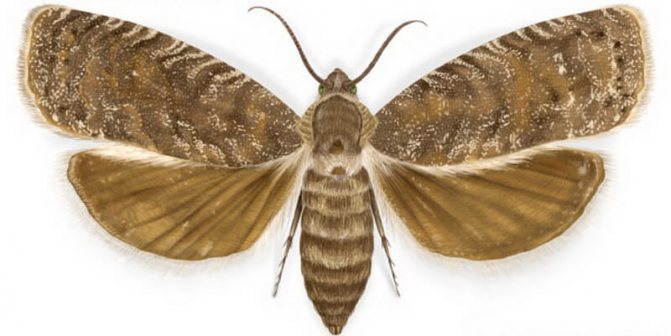

The Eastern moth butterfly has a wingspan of up to 15 mm
Before the fruits ripen, caterpillars of pinkish color and up to 13 mm long crawling out of the eggs feed on young shoots, and then move on to fruits. If left unchecked, you can lose up to 100% of your peach crop. The insect is on the quarantine list and all imported fruits and seedlings are checked by the state quarantine inspectorate. In case of detection of infection with the eastern moth, the imported products are subject to decontamination or are not allowed for import.
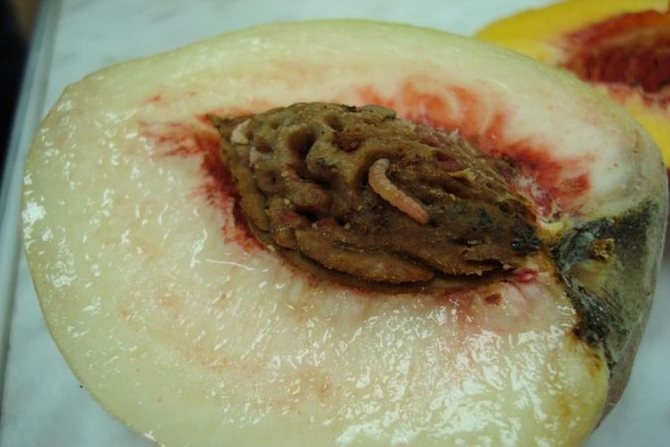

The larva of the eastern moth has a pinkish body up to 13 mm long
Pest prevention measures are traditional - about them in the next section. The fight is carried out using insecticides, the consumption of which per 10 liters of water is as follows:
- Benzophosphate - 60g.
- Karbofos (10%) - 60 g.
- Trichlor-metaphos-3 (10%) - 60 g.
- Chlorophos - 20 g.
- Rovikurt (25%) - 10 g.
They start processing before flowering, and finish no later than 30 days before harvesting. Depending on the degree of damage, up to three treatments are carried out with an interval of 10-15 days. During the period of fruit ripening, it is possible to use only bioinsecticides that are safe for humans (Iskra-Bio, Fitoverm, etc.).
Which trees are at risk and under what conditions
Most often, there is an apricot, cherry, plum, peach, sweet cherry clasterosporium disease. The pathogen infects stone fruit trees. The fungus reproduces on all parts of the plant, from the trunk to the leaves.
The causative agent of the disease reproduces most effectively in the remains of vegetation that has been affected. He hibernates in it in the form of spores. They are very resistant to any weather conditions, so they can live for several years. They hibernate either on the surface of the wood, or in fallen leaves, which were not removed in time.
Spores of the fungus are spread by birds, which carry it on their bodies, or by rain or wind.
Prevention measures for peach diseases and pest damage
Timely and regular implementation of simple preventive measures is almost guaranteed to save the gardener from problems with diseases and pests. Most of these activities are the same for all plants in the garden and take place at the same time. When describing diseases and pests, some of the measures have already been mentioned - for convenience, we will summarize them in one table.
Table: schedule for the implementation of preventive work to prevent peach diseases and damage by pests
| Deadlines | Composition of events | Method of execution |
| Fall | Collection and destruction of fallen leaves and weeds | Foliage, branches, weeds are burned at the stake. The resulting ash can be used as fertilizer. |
| Sanitary pruning of the crown with disposal of removed shoots | ||
| Late fall | Deep digging of soil in near-trunk circles with overturning of layers. This contributes to the rise of wintering pests to the surface and their death from frost. | |
| Lime whitewashing of trunks and skeletal branches. | For whitewashing, use a solution of slaked lime with the addition of 3% copper sulfate. You can also use special garden paints. | |
| Eradicating crown treatment | Spraying is carried out with a 3% solution of Bordeaux liquid or copper sulfate. In the spring, you can use the drug DNOC (no more than once every three years). | |
| Early spring | ||
| Installation of trapping belts | Belts are made from scrap materials | |
| Spring | Preventive treatments with insecticides and fungicides | It is best to use a tank mix of Horus and Decis preparations with a dosage according to the instructions. These substances are fully compatible and will provide protection against pests and fungi at the same time. One treatment is carried out before flowering and two after flowering with an interval of 10-15 days. |
Weevils
Weevils and their larvae cause serious harm to the peach tree - gnaw young leaves, buds, damage young buds and flower ovary (gnaw petals, pistils and stamens), carry fungal diseases.
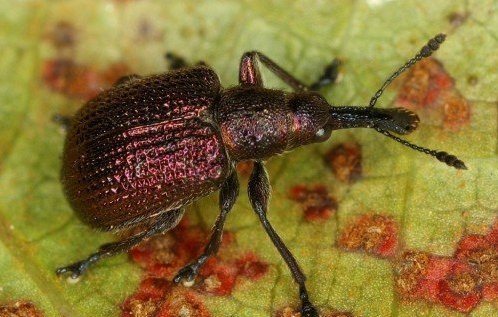

The fight against weevils includes, first of all, preventive measures (competent preventive actions will ensure reliable protection of the garden). Prevention is as follows:
- viewing and checking the branches of garden trees, checking seedlings (especially the root ball of the earth);
- competent planning of areas with crops vulnerable to weevils in different parts of the garden;
- autumn and spring digging of the ground around the peach, cleaning the old bark;
- spring whitewashing with milk of lime (1.5 kg of slaked lime per 10 liters of water) of the lower part of the trunk (during the period of swelling of the kidneys);
- installation of a fishing belt on the trunk (from the ground to the first branch);
- preliminary spraying of buds with an aqueous mixture of laundry soap and mustard powder (can be replaced with wood ash);
- planting garlic and onion beds around the peach (the pungent smell scares off the weevil).
Did you know? Weevils are black-brown beetles ranging in size from 7 to 12 mm with a long proboscis (because of which the insect is often called an elephant). They reproduce by parthenogenesis (only females live in our region). One female can lay up to 1000 eggs. Weevils hibernate in the soil, come out into the air in April, lay eggs in May (in flower buds).
If pest prevention did not help, and the weevil still wound up, biological (natural) and chemical (insecticidal) methods are most often used.
Biological method safer for plants and pollinating insects (bees):
- Using natural enemies of weevils - for example, nematodes can be used from May to June. The preparation with entomonematodes in the form of powder ("Antonem-F" or "Nemabakt") dissolves in water. Then the peach roots are watered with this solution. Nematodes with water penetrate into the weevil larvae and kill pests.
- "Morning" manual collection of bugs - in the morning, when the bugs are still inhibited by the coolness, you can shake them off the branches onto a spread bedspread or oilcloth.
- Removal of damaged buds (visible on the brown top).
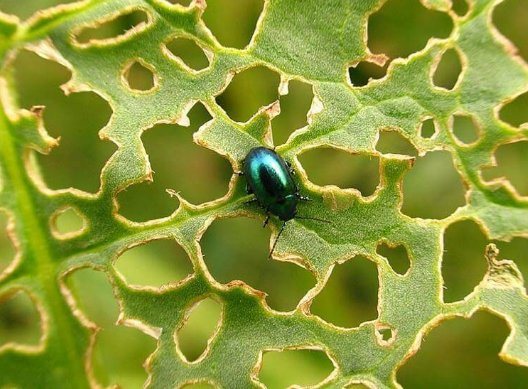

If safe methods have not led to the desired result, you need to apply more radical means - spray the buds with insecticides.
The application depends on the drug, but the first time it is necessary to process a week before the opening of flowers (drugs "Karachar", "Fitoferm", "Iskra M"), a number of drugs can be used three times - before flowering, the last phase of flowering and 10 days after the end of flowering ("Fufanon", "Kemifos", "Novaktion", etc.).
Before use, you should carefully read the instructions. Typical fluid consumption is 2 to 5 liters per tree.
Important! In order to avoid the addiction of pests to the insecticide, it is not recommended to use the same one in a row, it is more expedient to use different preparations. If there are many trees, then before the first use you need to test the effect of the agent on one tree.
Varieties resistant to damage
The most effective method of getting rid of perforated spots is to plant trees that are resistant to the disease on the site. But these species have one drawback - they do not differ in high yield and quality of fruits.
Apricot
The most resistant varieties of apricot include:
- Pineapple - a tree with light yellow fruits that can be used both for food and for making jam.
- The variety is distinguished by a good yield. Red-cheeked... Bright red spots can be seen on its fruits.
Peach
Peach clasterosporium disease can be avoided by choosing varieties:
- «Greensboro"Is an early ripening variety with large greenish-creamy fruits. But peaches of this variety are unsuitable for transportation.
- «Cardinal"- a variety that gives juicy and early orange fruits.
- For a temperate climate, the variety is ideal "Kiev early". This is an unpretentious, frost-resistant culture. The color of peaches is bright orange with reddish specks.
Cherry
Among the cherry trees that are resistant to the disease, the following varieties stand out:
- «Amateur"Is a tree that gives a high yield with an average ripening period. Fruits of deep red color with bright taste and aroma. They can be used both raw and canned.
For industrial purposes, a variety is selected that is resistant to stone fruit clasterosporium disease, called "Lyubskaya».

